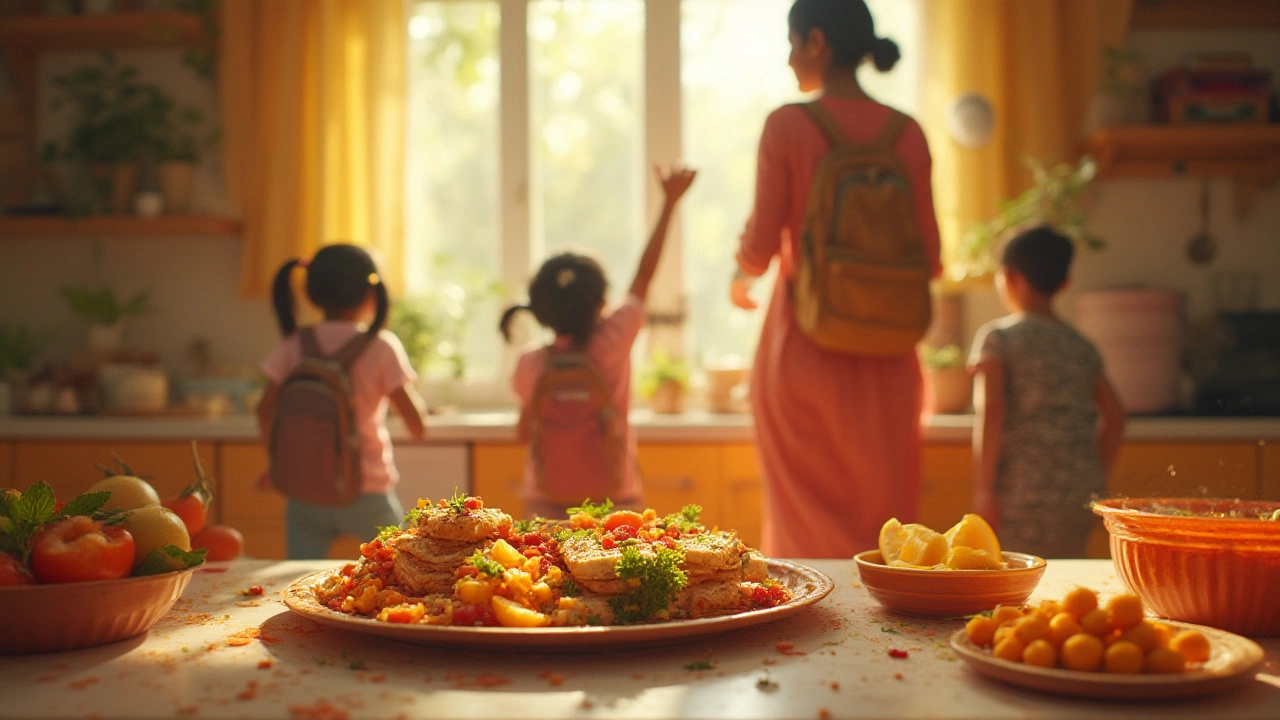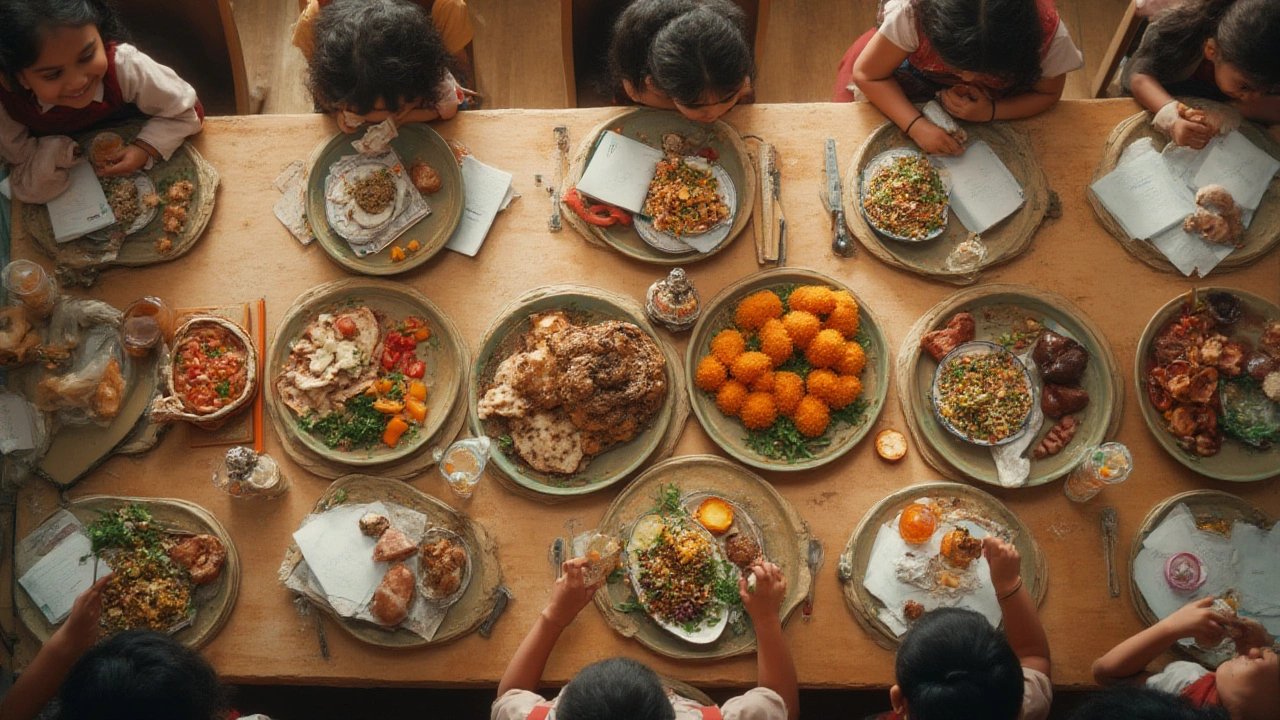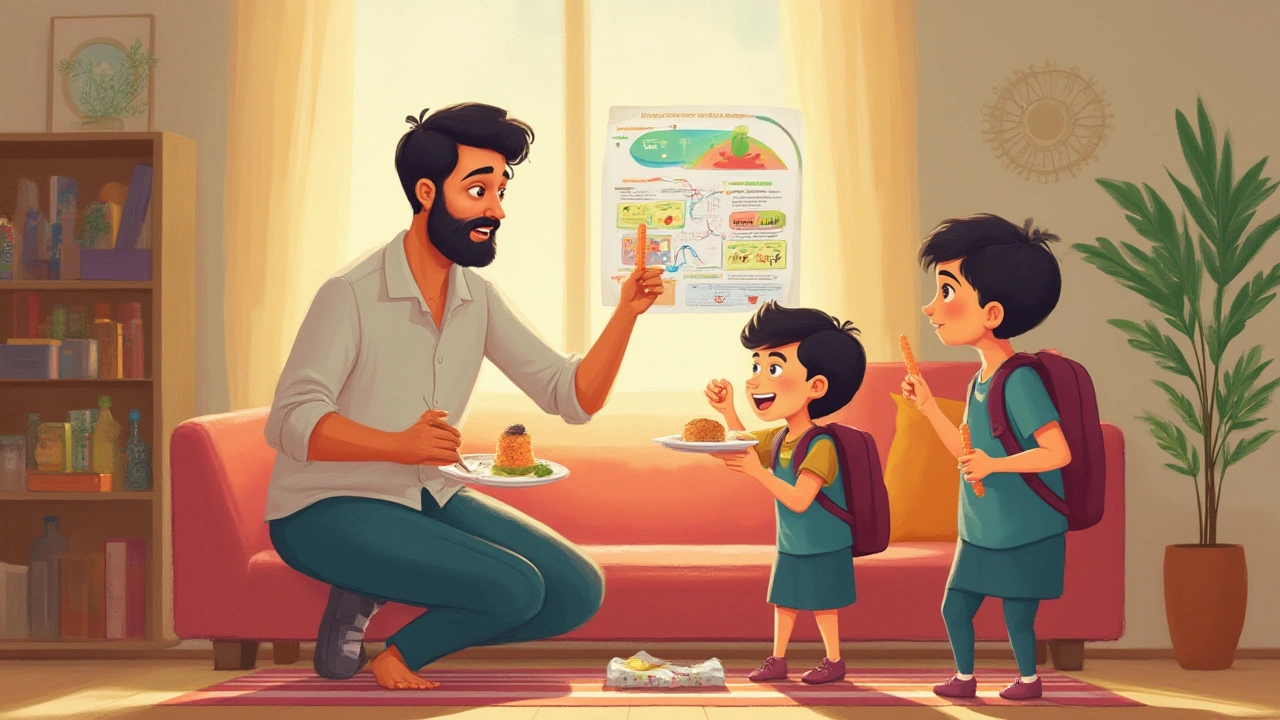
- Created by: Lydia Carmichael
- Completed on: 23 Jul 2025
- Categories: Health and Wellness
Imagine this: the school bell rings, and within minutes, your child is home, shoes off, backpack flung into the corner, and already rooting around in the kitchen. It’s like clockwork—no matter what they had for lunch, they’re instantly craving a snack. If you’re amazed by the bottomless appetite kids seem to have after school, you’re definitely not alone. The after-school hunger is almost legendary—on some days, it seems as if their stomachs are bottomless pits. But why does this happen? What’s going on in their bodies and minds that leaves them so ravenous?
The Science Behind After-School Hunger
Let’s peel back the layers on this childhood mystery because it’s not just your imagination—kids really do get hungrier after a long school day, and there’s a lot going on inside them that drives this. First, take a look at their activity levels. Most kids spend the entire day darting between classes, going from one activity to another, and often having a run-around during recess or gym. Their bodies burn through calories at a pace that would impress most adults. Recent data from the CDC even shows that children between the ages of 6 and 12 need anywhere between 1,600 to 2,500 calories a day, depending on age, sex, and activity level. After a day at school, a big chunk of that energy is already gone.
What about the timing of meals? School breakfast and lunch are often spaced oddly, with long gaps in between and, let’s be honest, the meals aren’t always the most filling. If you’ve looked at a typical school lunch menu, you know why: small portions, minimal fresh foods, and a focus on “kid friendly” items that don’t always bring lasting energy. Lunch might be served as early as 11:00am, and there could be a five- or six-hour gap before dinner. That’s a huge stretch for a growing, active human being.
Growth spurts also play a big role. When kids hit a phase where their bodies are growing at lightning speed, their caloric needs shoot up almost overnight. If you’ve ever felt like your child was eating you out of house and home for a month straight, only for their pants to be too short the next, you know the drill. Growth demands nutrients in bulk—protein to build, carbs to fuel, fats for developing brains—and when the demand grows, so does hunger.
Here’s something that’s easy to overlook: stress. School comes with all sorts of emotional rollercoasters. Tests, peer drama, new routines—they can all send the body into a low-level stress response, which in turn increases cortisol levels. Some research has shown that raised cortisol makes kids crave quick energy sources—like carbs and sugar—when they get home. It’s why so many kids go straight for crackers, cookies, and cereal instead of that leftover broccoli.
Let’s add in another twist: hydration. Sometimes, kids mistake thirst for hunger. If they don’t drink enough water at school (and a 2019 Harvard study found that over half of US kids are underhydrated), they might come home and reach for a snack when what they really need is a tall glass of water. Since most schools don’t encourage frequent water breaks, this one sneaks up on families too often.

What’s Actually Happening at School?
You might wonder what really goes on during the school day that makes hunger hit so hard. It turns out, it’s not just about missing lunch or running on the playground. The mental effort required throughout the day seriously drains energy. Think about it: even adults feel wiped after hours of meetings, so imagine how intense it is for a child who’s juggling spelling, math, fine motor skills, and social navigation all before lunchtime. Their brains use up about 20% of the entire body’s energy, and kids’ brains are busy learning all day long.
Then there’s the food itself. Plenty of school cafeterias aim for mass appeal and budget-friendliness, which means meals can be heavy on refined carbs and light on protein and healthy fats. A tray of chicken nuggets, a scoop of mashed potatoes, and a handful of canned fruit just won’t stick around very long in an active kid’s belly. The USDA published a report showing that only one-third of school lunches met nutritional guidelines for whole grains, and less than half contain enough fresh veggies or protein to keep hunger at bay for hours.
Social factors can also mess with lunchtime. Kids are often more interested in chatting with friends or rushing through their meal so they can get outside to play, which leads to half-eaten meals or tossed-out sandwiches. A study from the Journal of the Academy of Nutrition and Dietetics found that kids with at least 25 minutes to eat consumed more fruit, vegetables, milk, and fiber—but only about half of schools actually give kids that much time.
The school day isn’t just sitting at desks; there’s a good chance your child is involved in some kind of after-school activity—be it sports, theater, or music rehearsals. These can ramp up energy usage even more. Soccer practice or a band recital can easily add another 200-400 calories burned, leaving them with even more of an appetite for when they finally walk in the door.
Peer pressure plays its part, too. If one kid whips out a new snack or sugary treat during aftercare, everyone else wants in. This leads to a cycle: kids expect to eat the moment they get home, and parents, not wanting to deal with crankiness, stock up on snacks, which encourages the hunger routine, whether it’s real or just habit.
Even seasonal shifts contribute. Winter months mean more time indoors and shorter days, but colder weather often makes our bodies crave warm or comfort food snacks after a chilly walk home. Hot chocolate sounds a lot better to a shivering child than a cold glass of carrot juice.
Check out this quick comparison table to give you an idea of how calories can disappear during a typical school day:
| School Activity | Estimated Calories Burned (per hour) |
|---|---|
| Recess (active play) | 150-200 |
| Gym class | 180-250 |
| Walking to/from school | 50-120 |
| Band/Choir Rehearsal | 70-110 |
| After-school sports | 200-400 |

Smart Snack Solutions and Tips for Parents
So, if after-school hunger is practically guaranteed, what’s a parent to do? There’s no point battling biology or refusing kids food when they’re genuinely hungry, but there are some clever strategies to keep things healthy—and avoid turning snack time into a junk food free-for-all.
- Prioritize Protein and Healthy Fats: Protein and fat help kids feel fuller for longer. Quick wins: a grilled cheese on whole-grain bread, Greek yogurt with berries, nut butter on apples, hard-boiled eggs, or a handful of trail mix assembled at home. Avoid snacks that are all sugar or pure carbs—they’ll just spike and crash energy.
- Fiber is Your Friend: Offer fiber-rich choices like whole-grain crackers, popcorn, or cut-up veggies with hummus. Fiber keeps tummies satisfied and energy steady until dinner rolls around.
- Plan for Hydration: Sometimes, water beats every snack. Have a water bottle ready when your child gets home, and let them drink before heading for the snacks. Add lemon slices, berries, or a splash of juice if plain water is boring to them.
- Fruit First: Keep easy, grab-and-go fruits on hand—bananas, grapes, oranges, or pre-washed berries. Put a bowl on the counter for a visual nudge.
- Set Snack Routines: Routines aren’t just for bedtime. Set a snack window, like 3:30-4:00pm, so kids know when to expect food. This can prevent mindless grazing until dinner and stop the dinnertime standoff.
- Make it Social: Use after-school snack time to connect. Kids will often open up about their day over a smoothie or some celery with dip, and you can gently guide snack choices without nagging.
- Get Kids Involved: Invite kids to help prep their snacks. When they have a say, they’re more likely to eat what’s healthy. Try fun DIY snack boards or homemade trail mix mixes as an activity together.
- Don’t Demonize Treats: It’s totally fine to have cookies or chips—just not every day and not as the first option. Offer treats alongside a healthy choice or after they’ve had something nourishing.
- Keep Portions Reasonable: Use small bowls or plates and offer reasonable portions. Big bags of chips can make it easy to overeat mindlessly.
- Prepare Ahead for Busy Days: Some days are so packed that snacks happen in the car or right before a sports practice. Pack mini-coolers or insulated bags with cheese sticks, nut bars, fruit, or sandwiches, so nutrition isn’t skipped.
- Mix Up the Options: Avoid falling into a rut—rotate different snack options weekly to keep things interesting and cover more nutritional bases.
If you’re worried about creating snack monsters, rest easy—kids respond really well when you put some gentle structure in place but still respect their hunger. A 2021 clinical trial from Stanford University found that when parents offered two or three healthy snack options and let kids pick, children not only ate better, but also felt more satisfied—and parents fought fewer food battles day to day.
Not every day will be perfect, but if you stay consistent, teach your kids to listen to real hunger cues, and keep healthy options close-by, after-school hangriness will feel a lot less intimidating. Next time you hear that familiar shout, "I’m STARVING!" just know it’s part biology, part circumstance, and totally manageable with a little kitchen know-how.